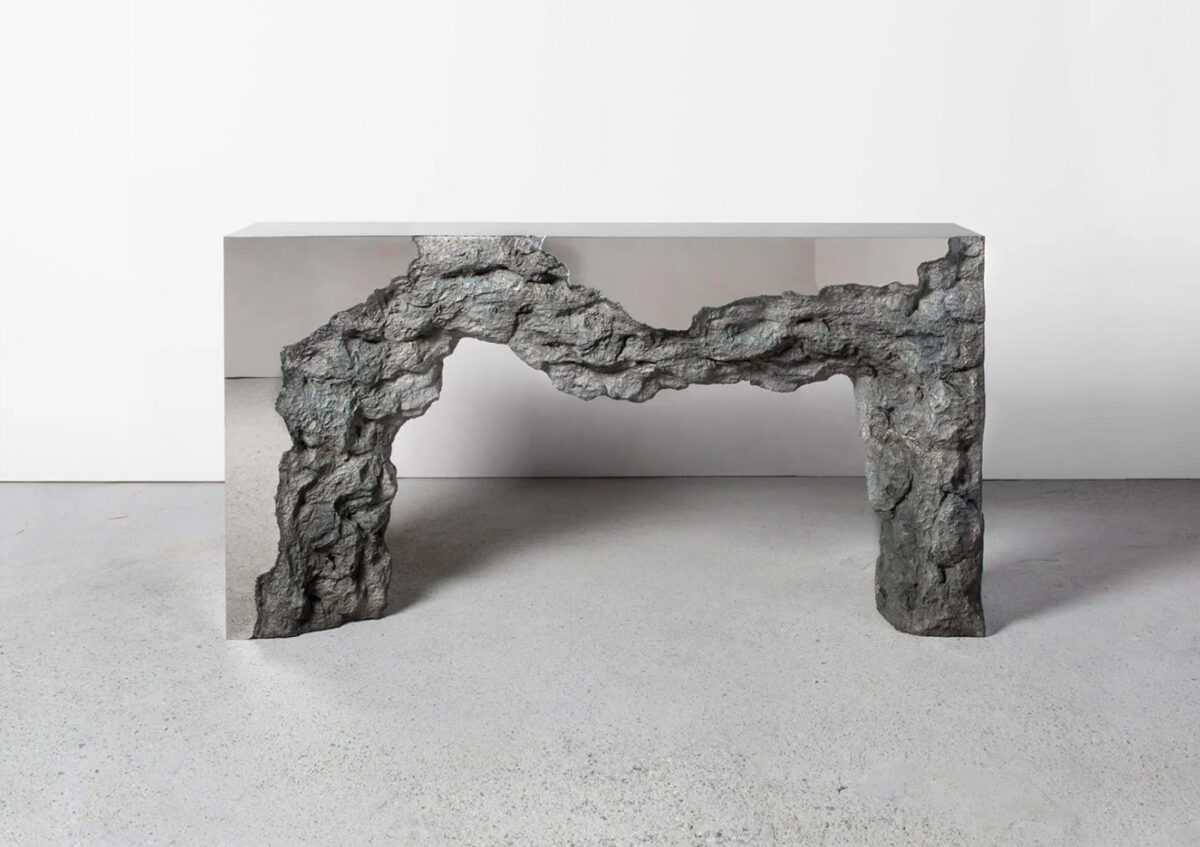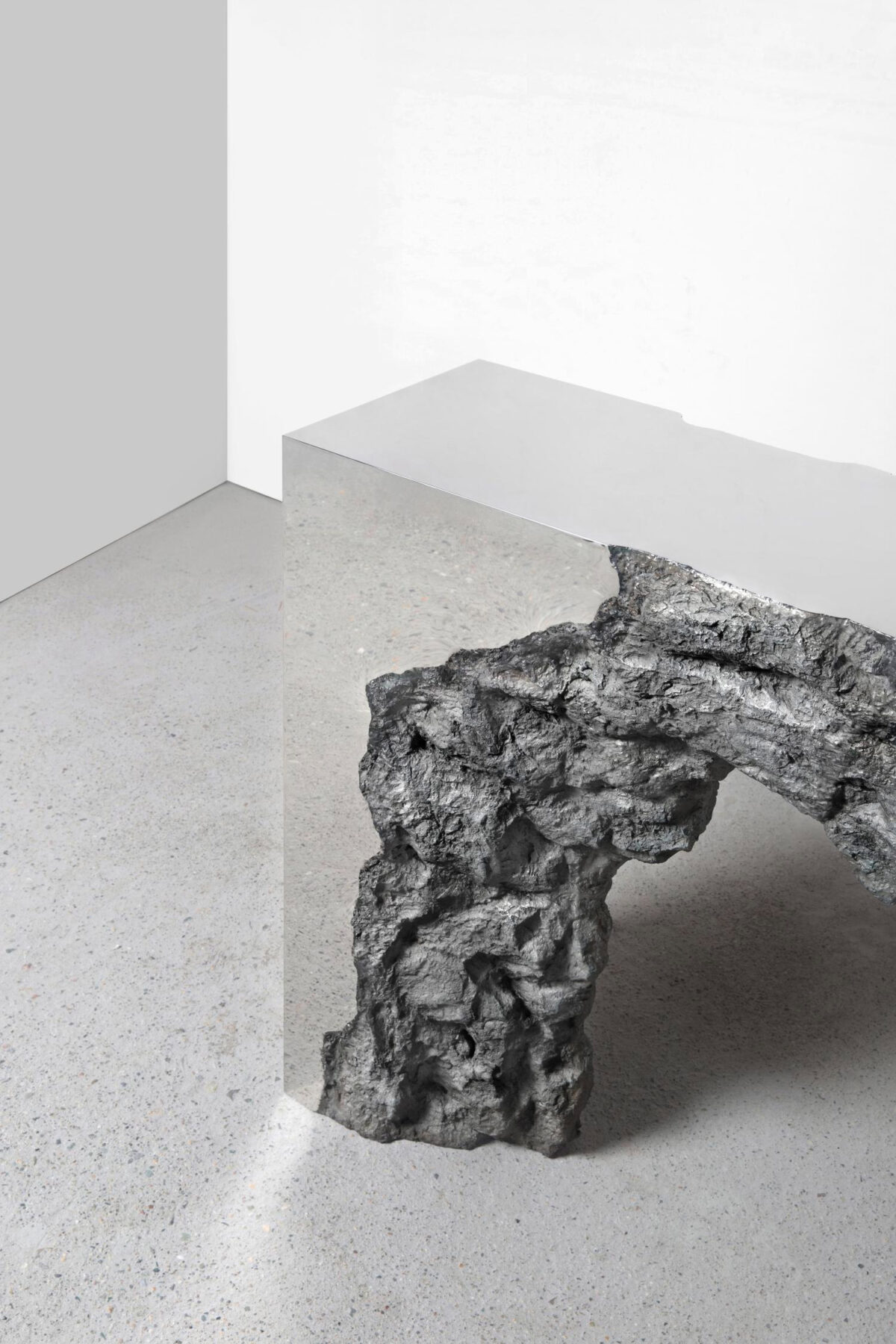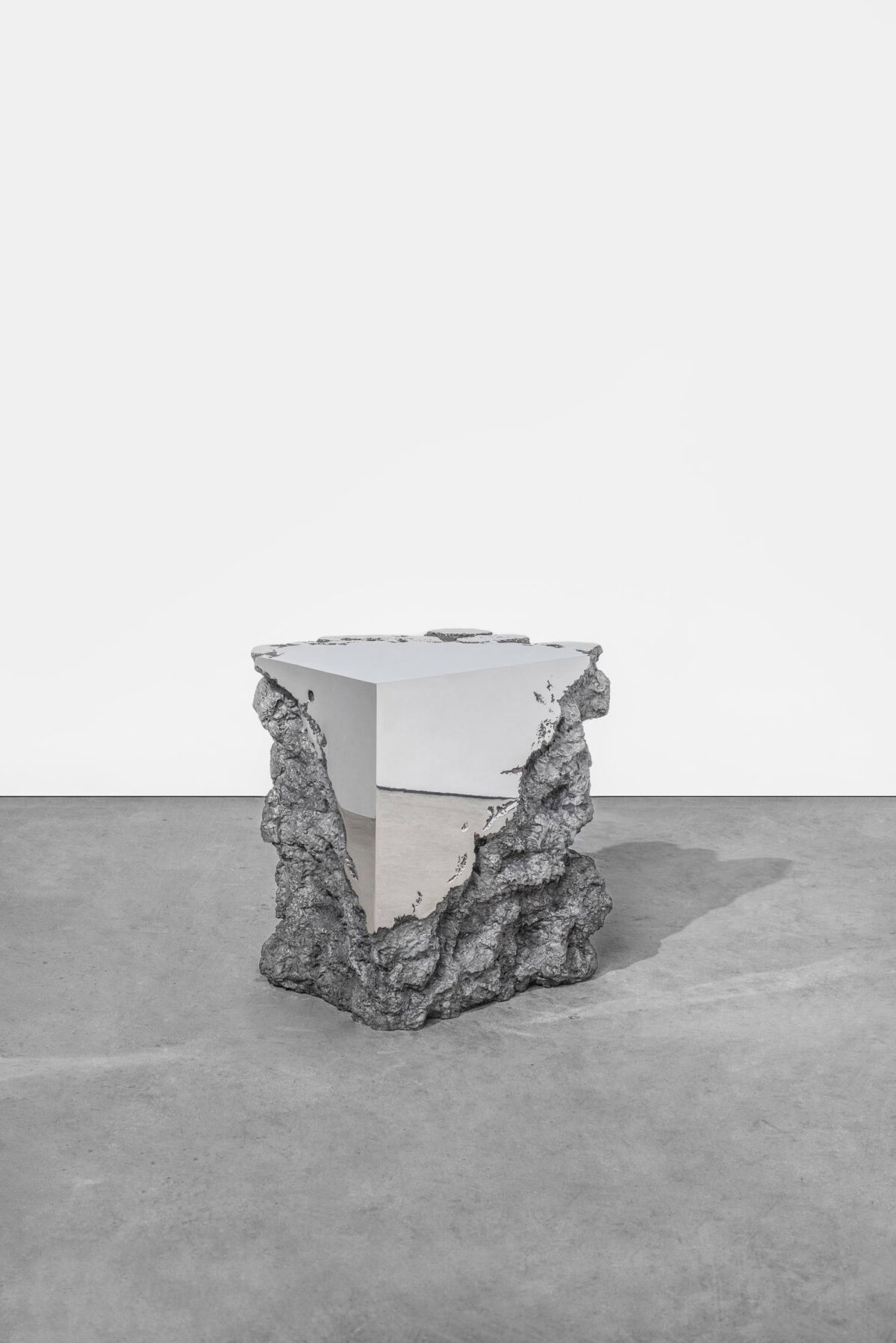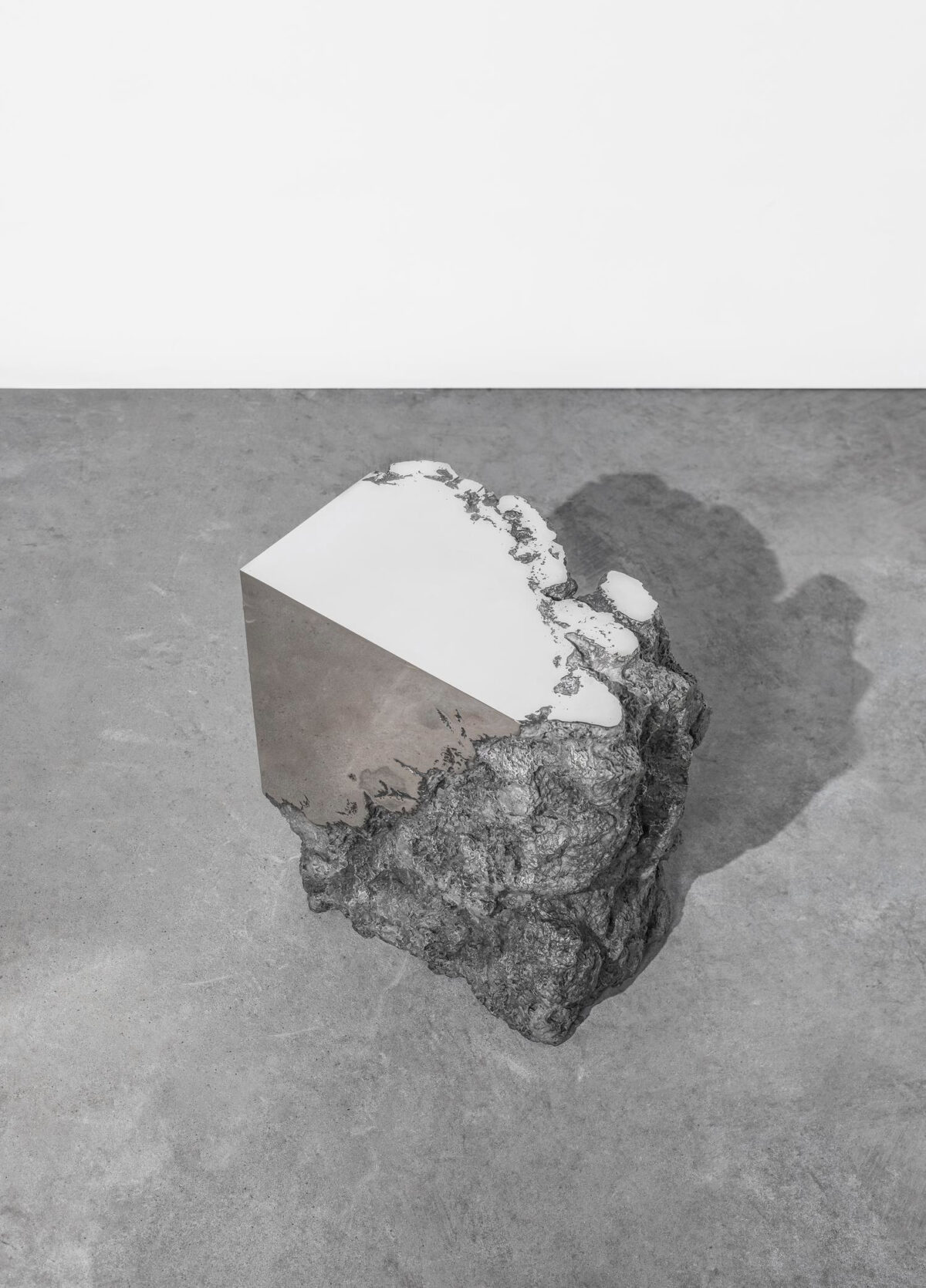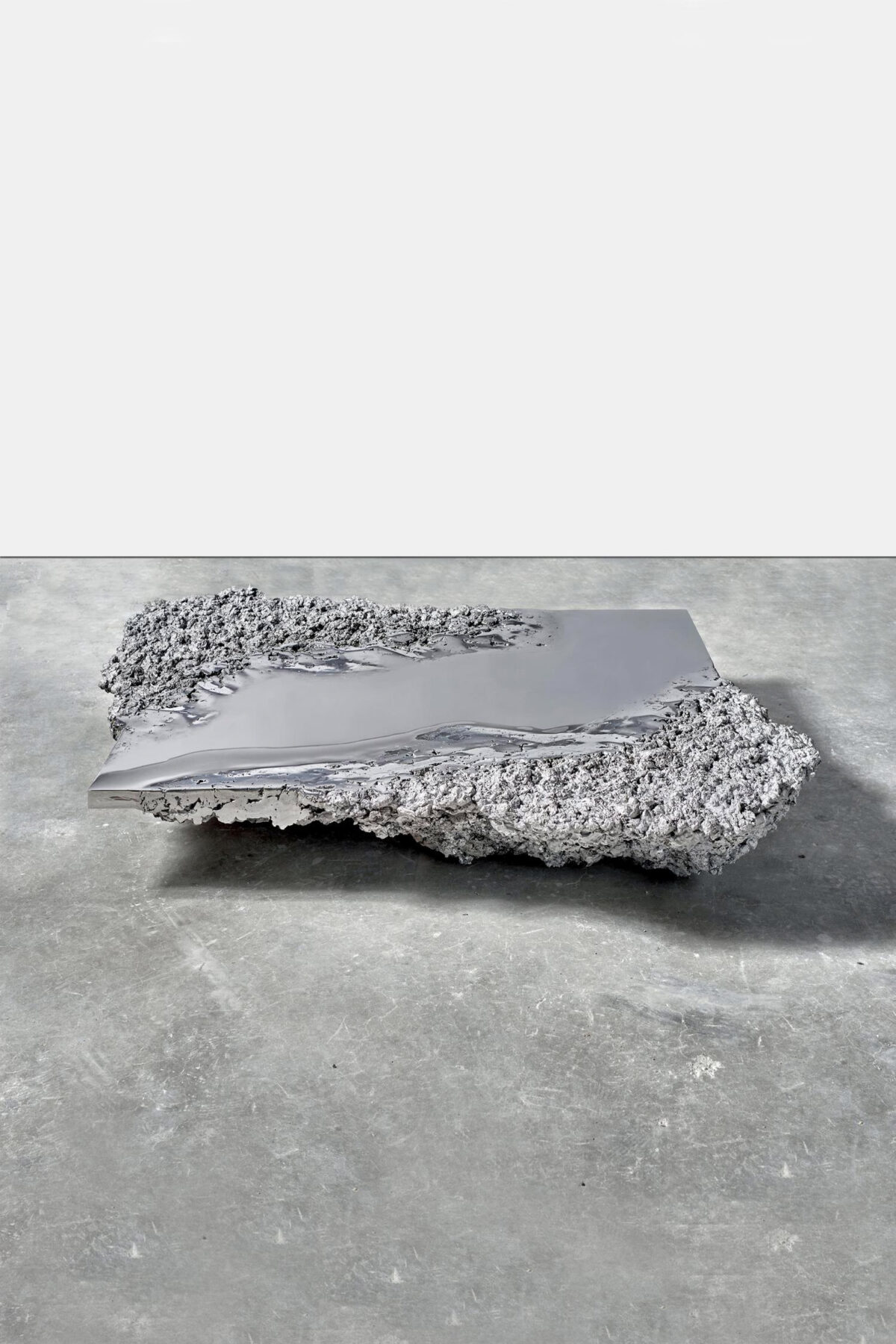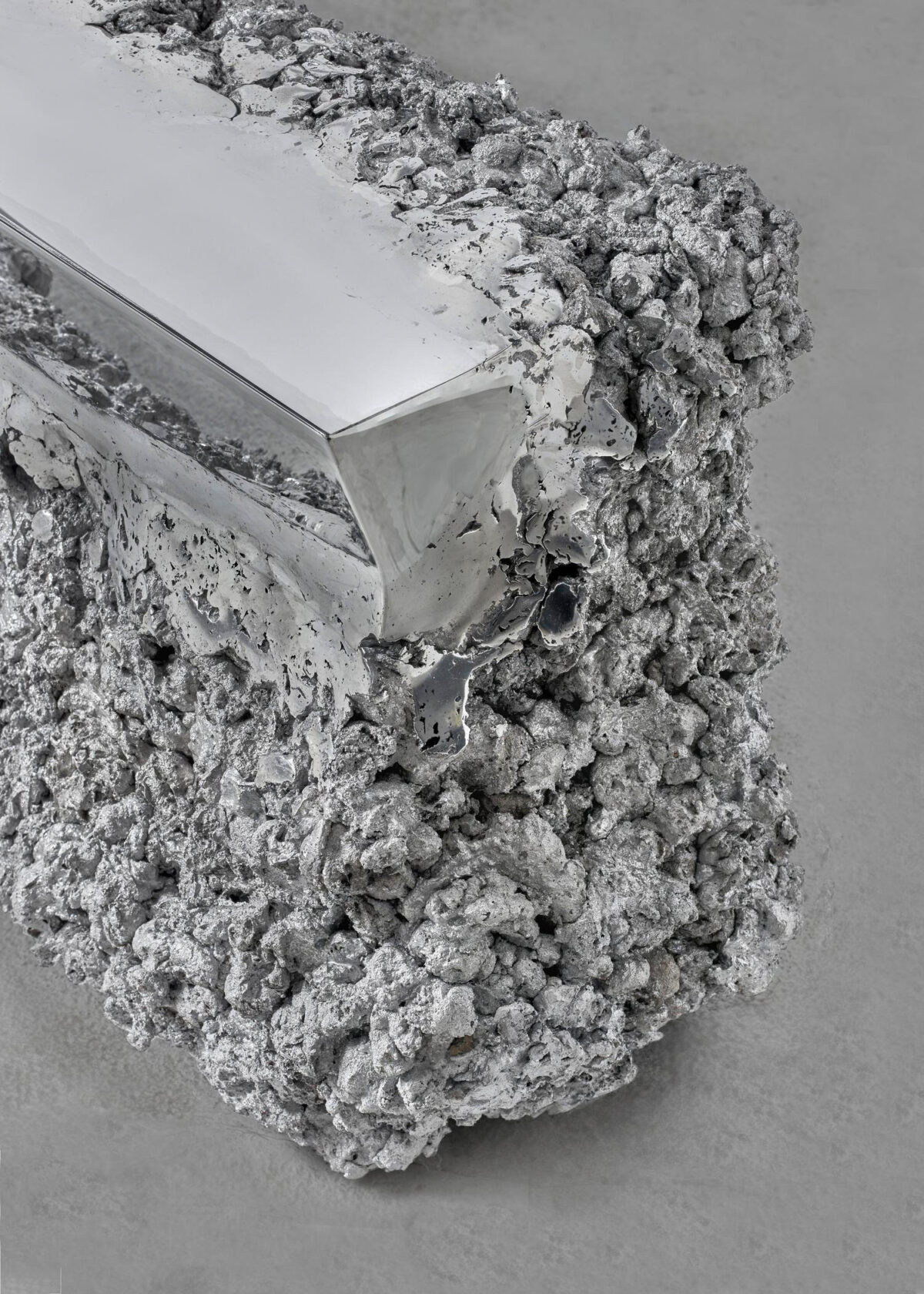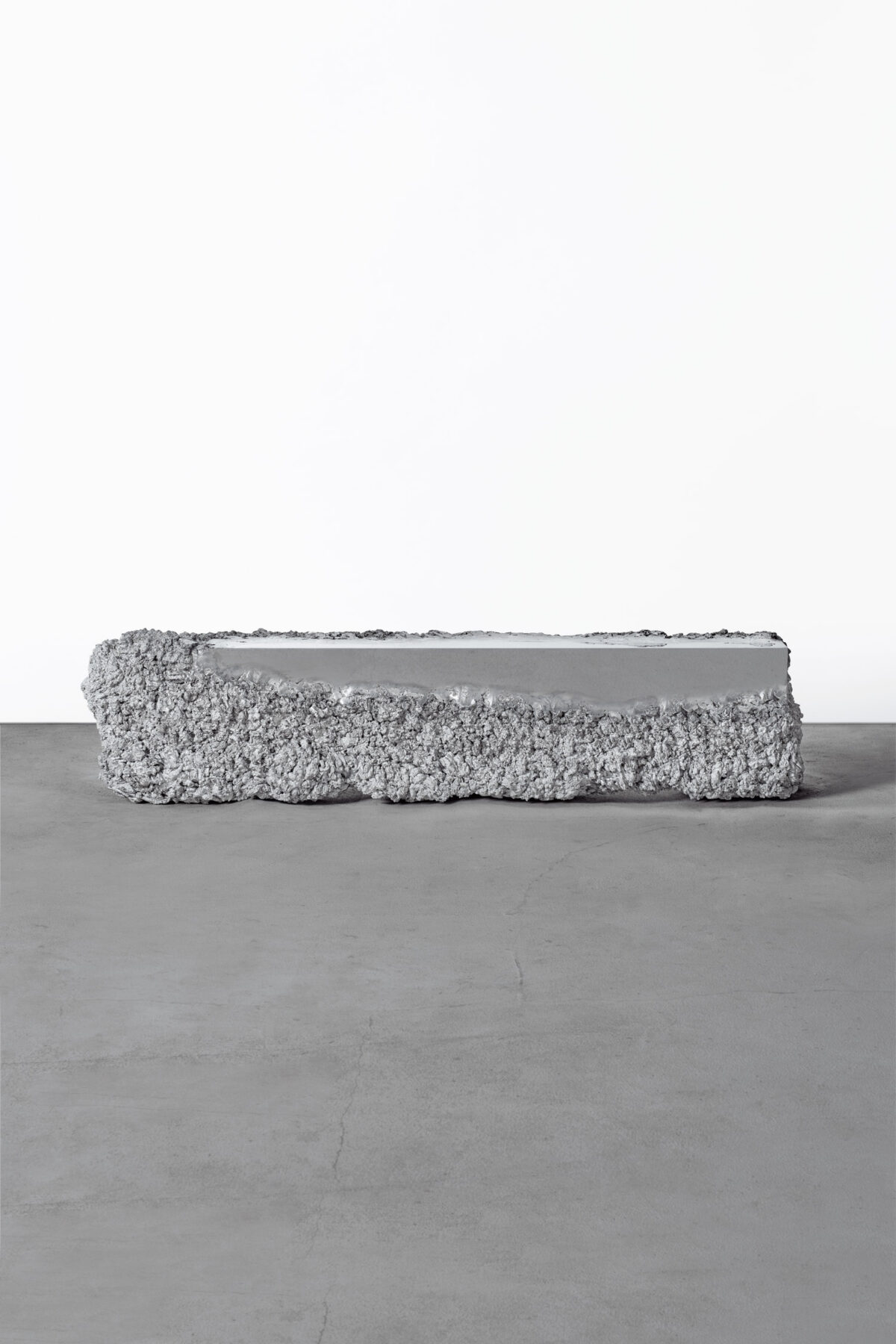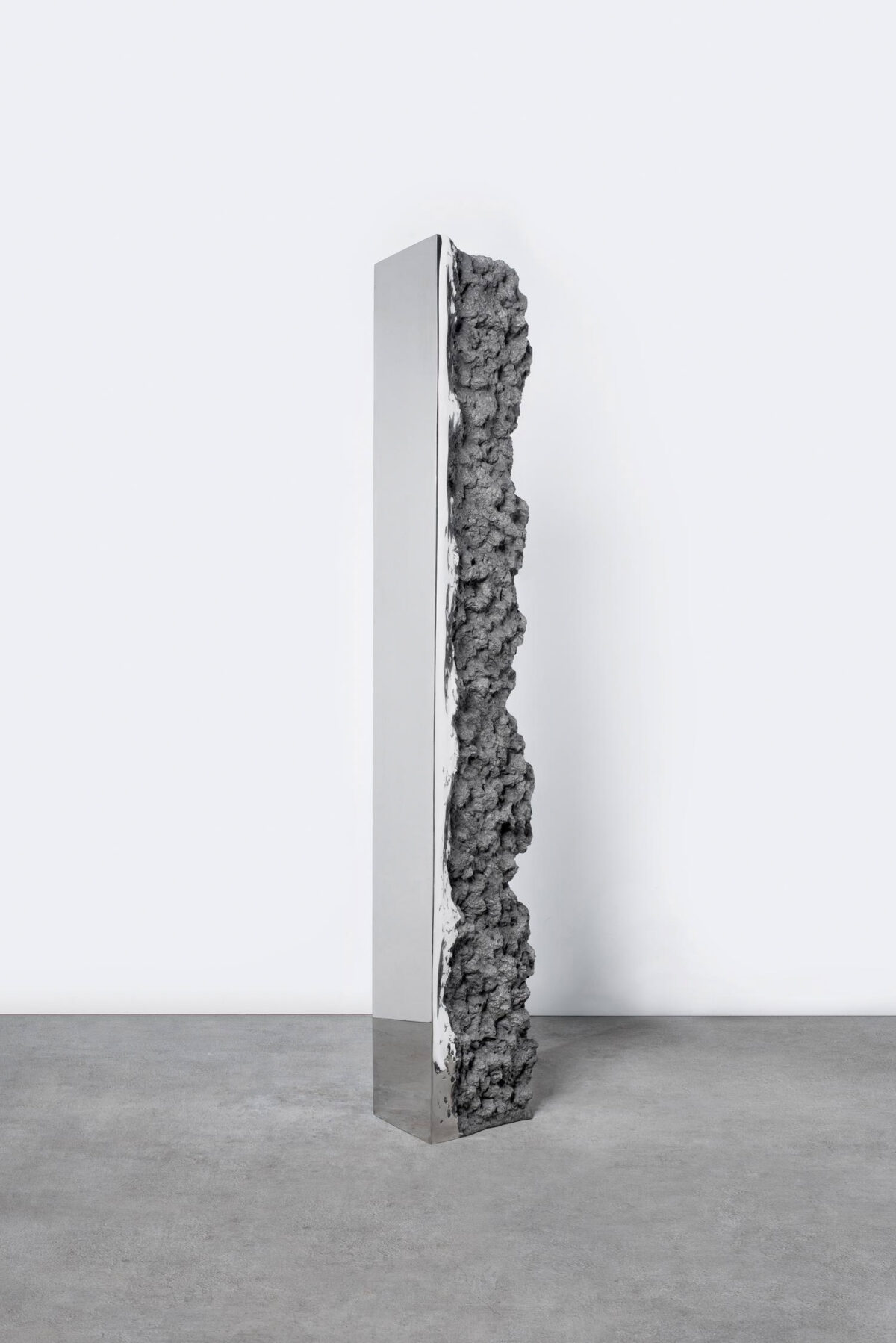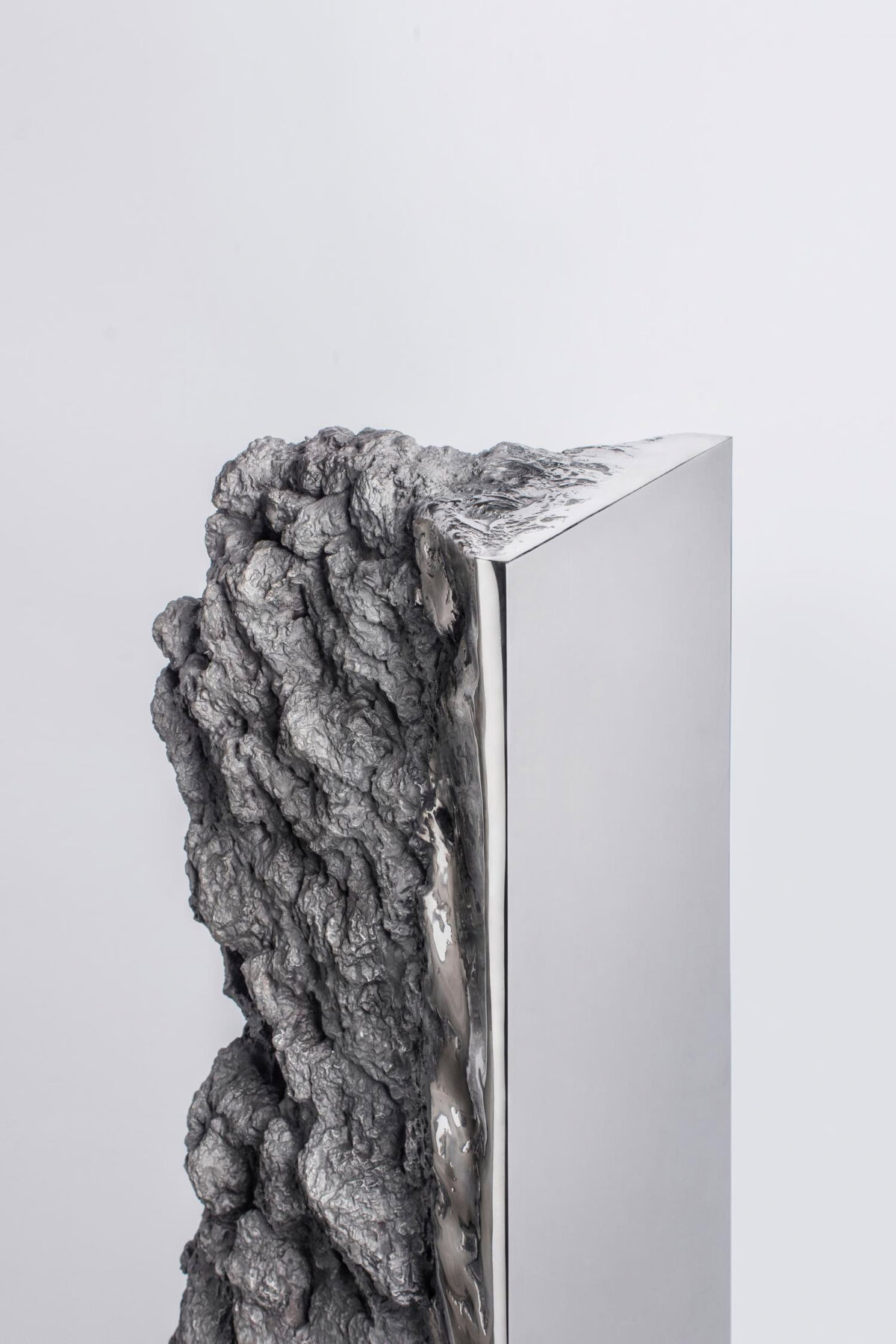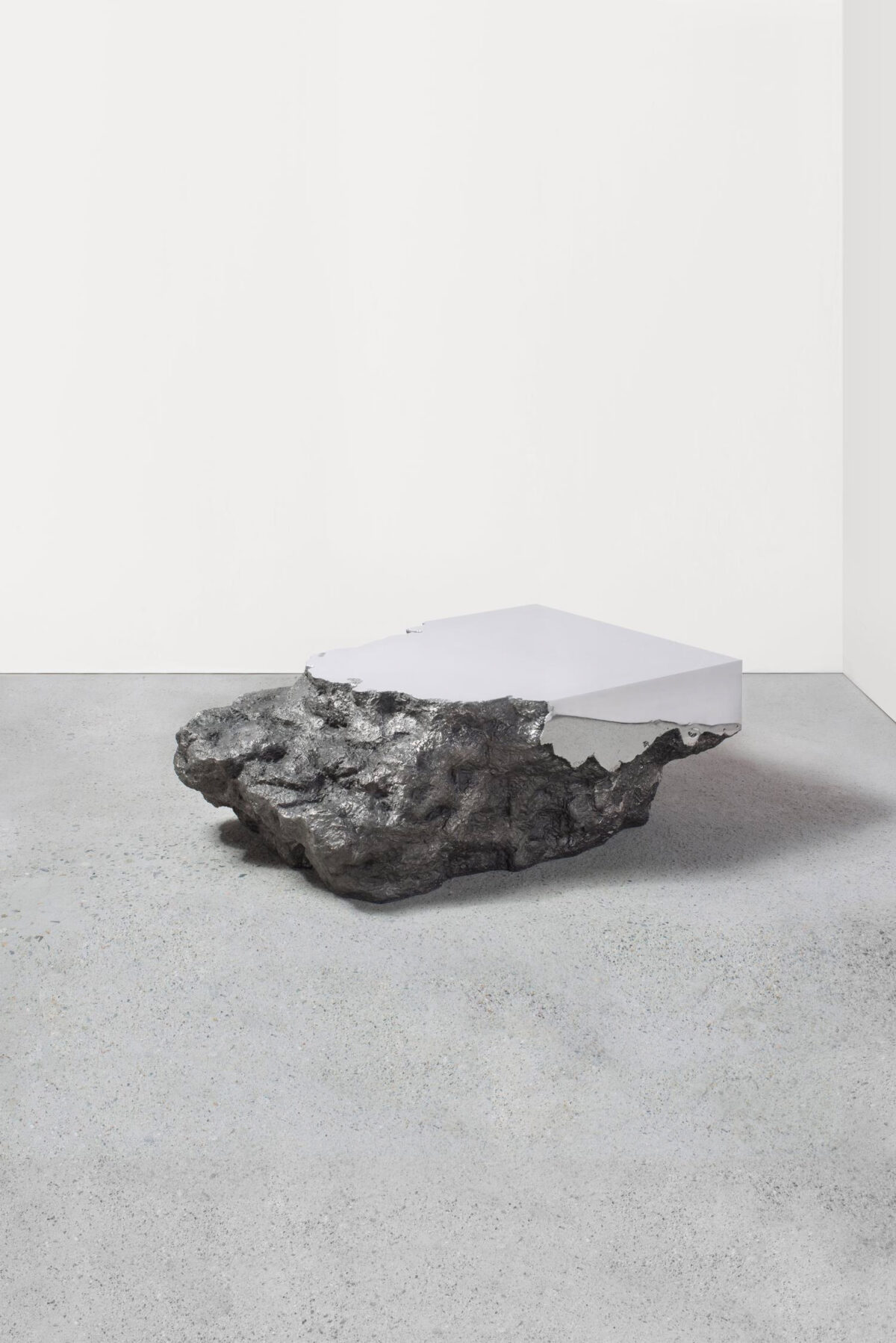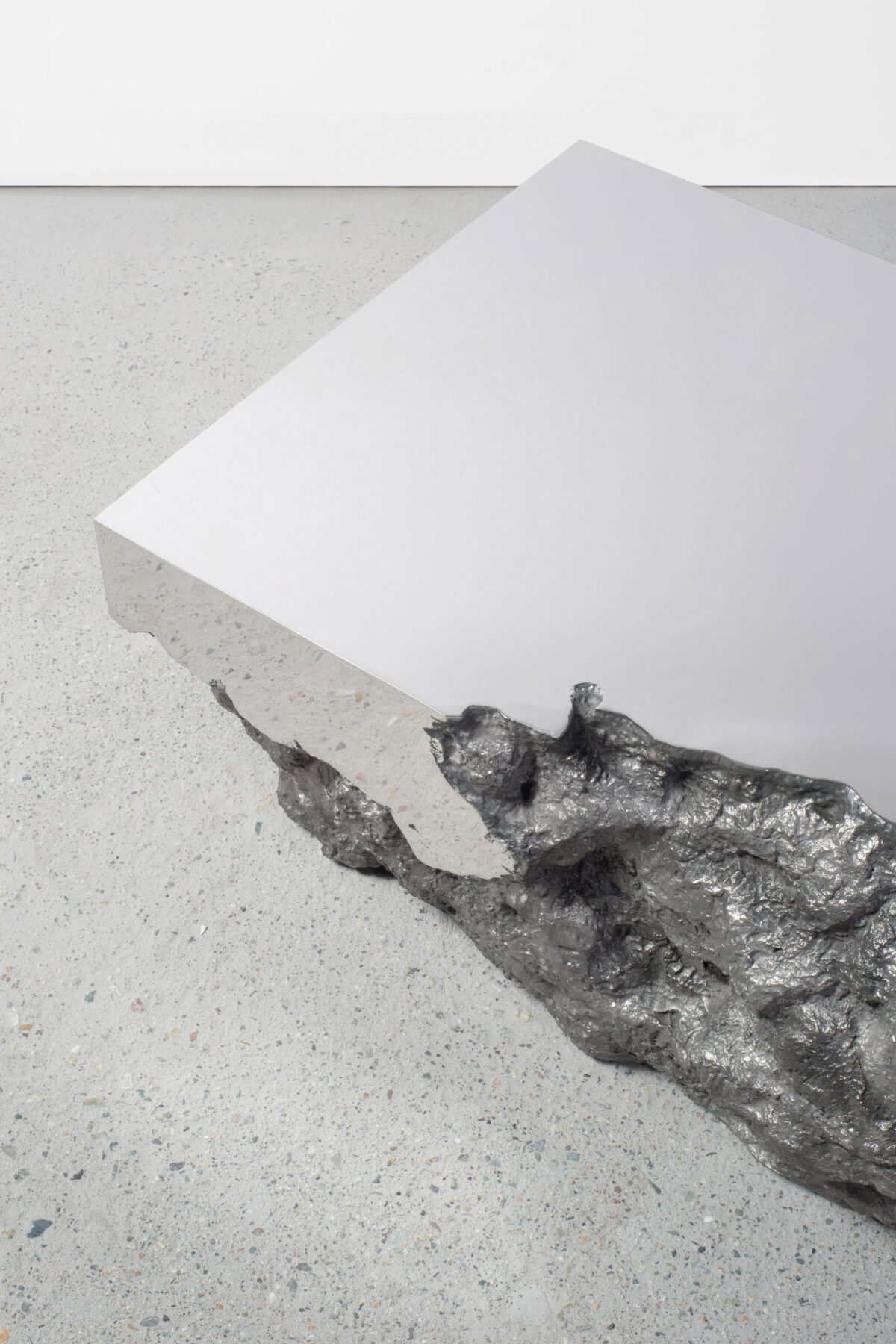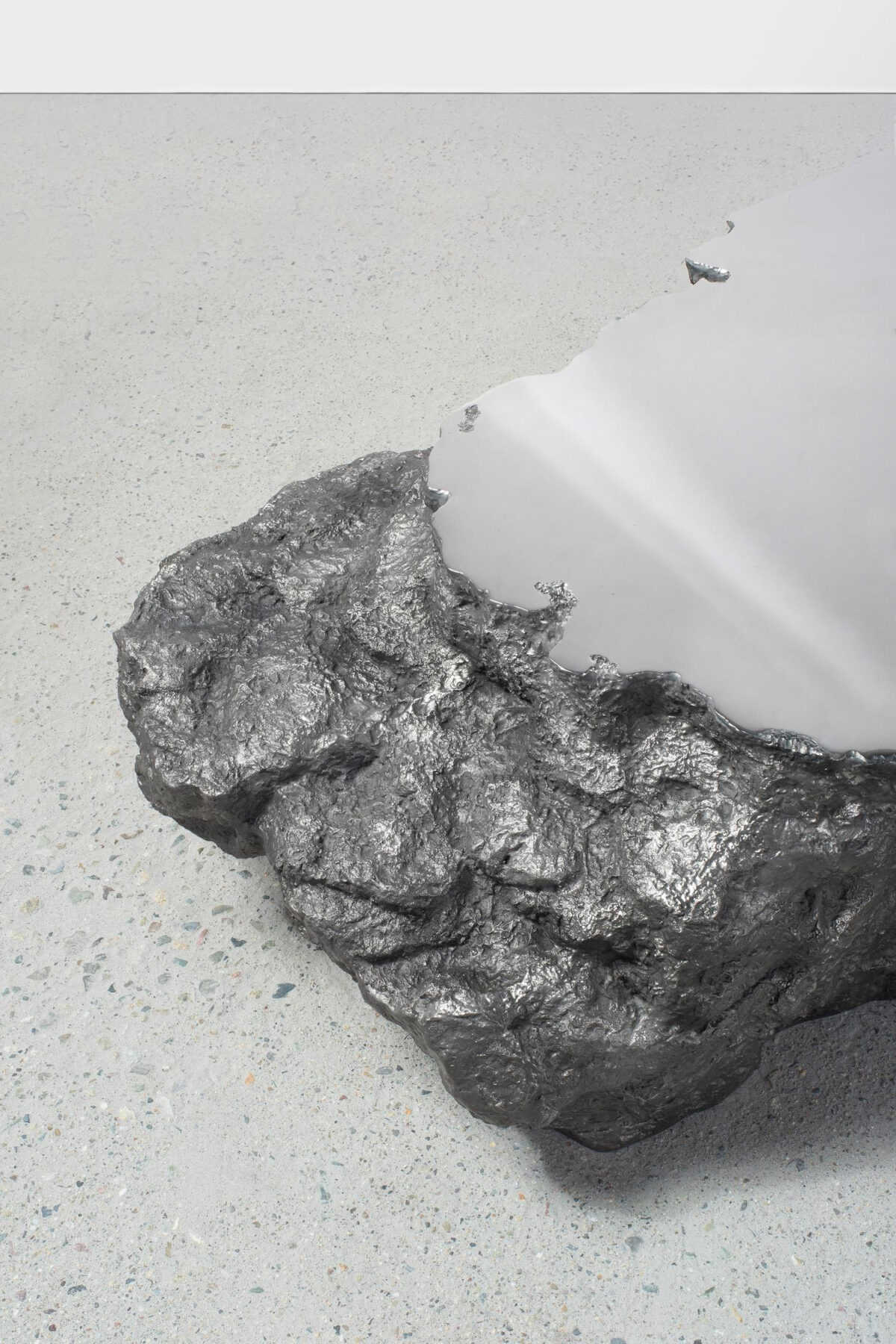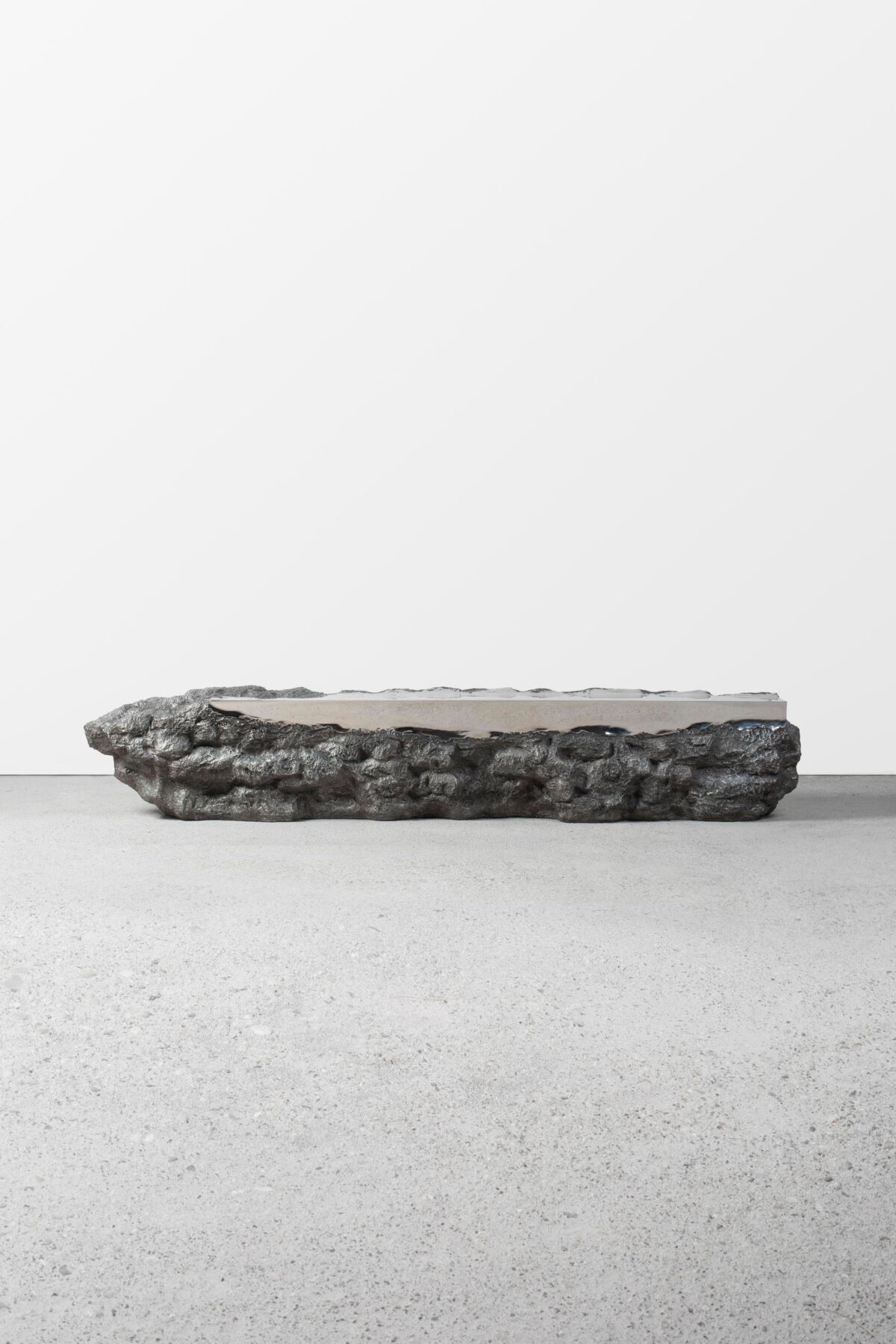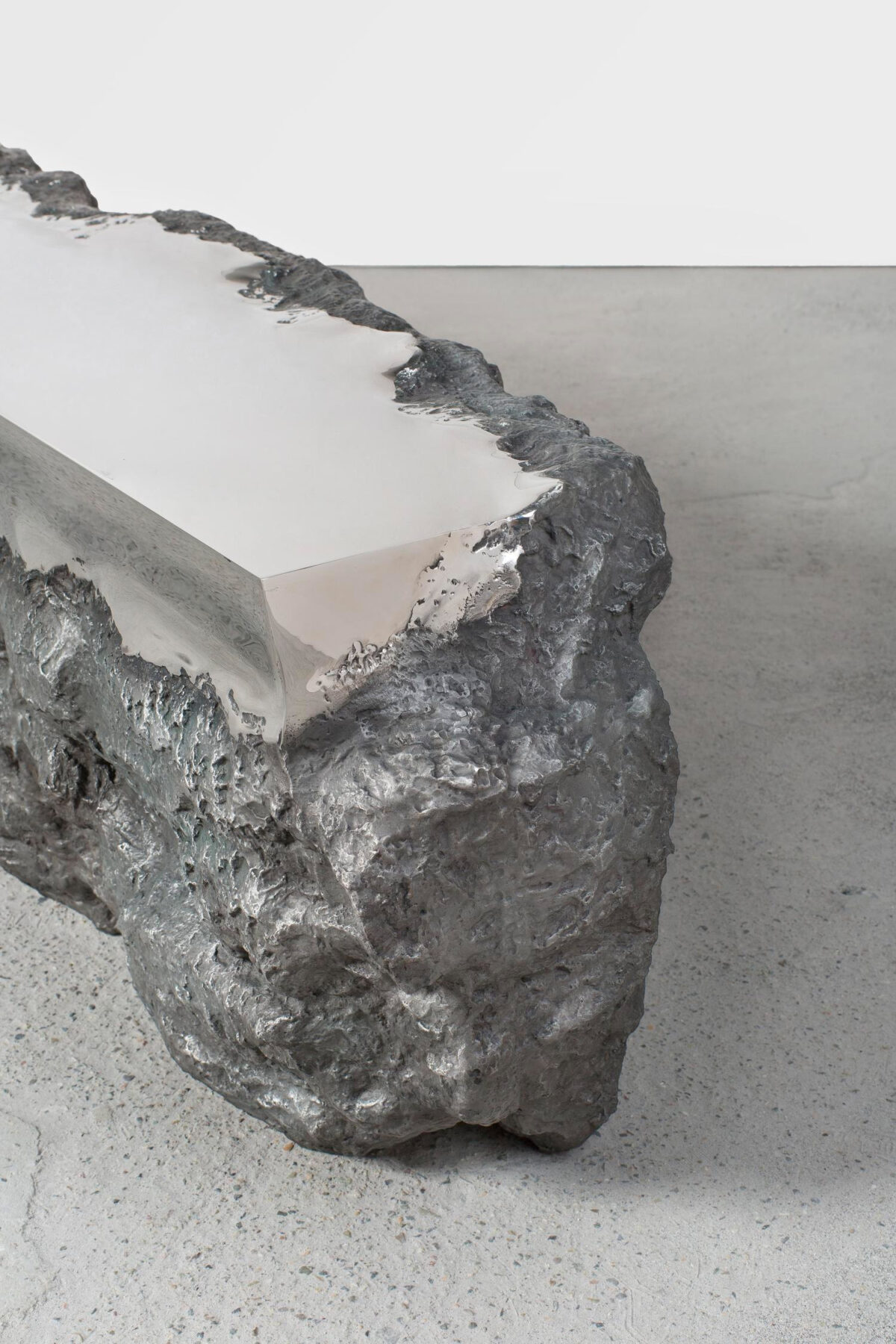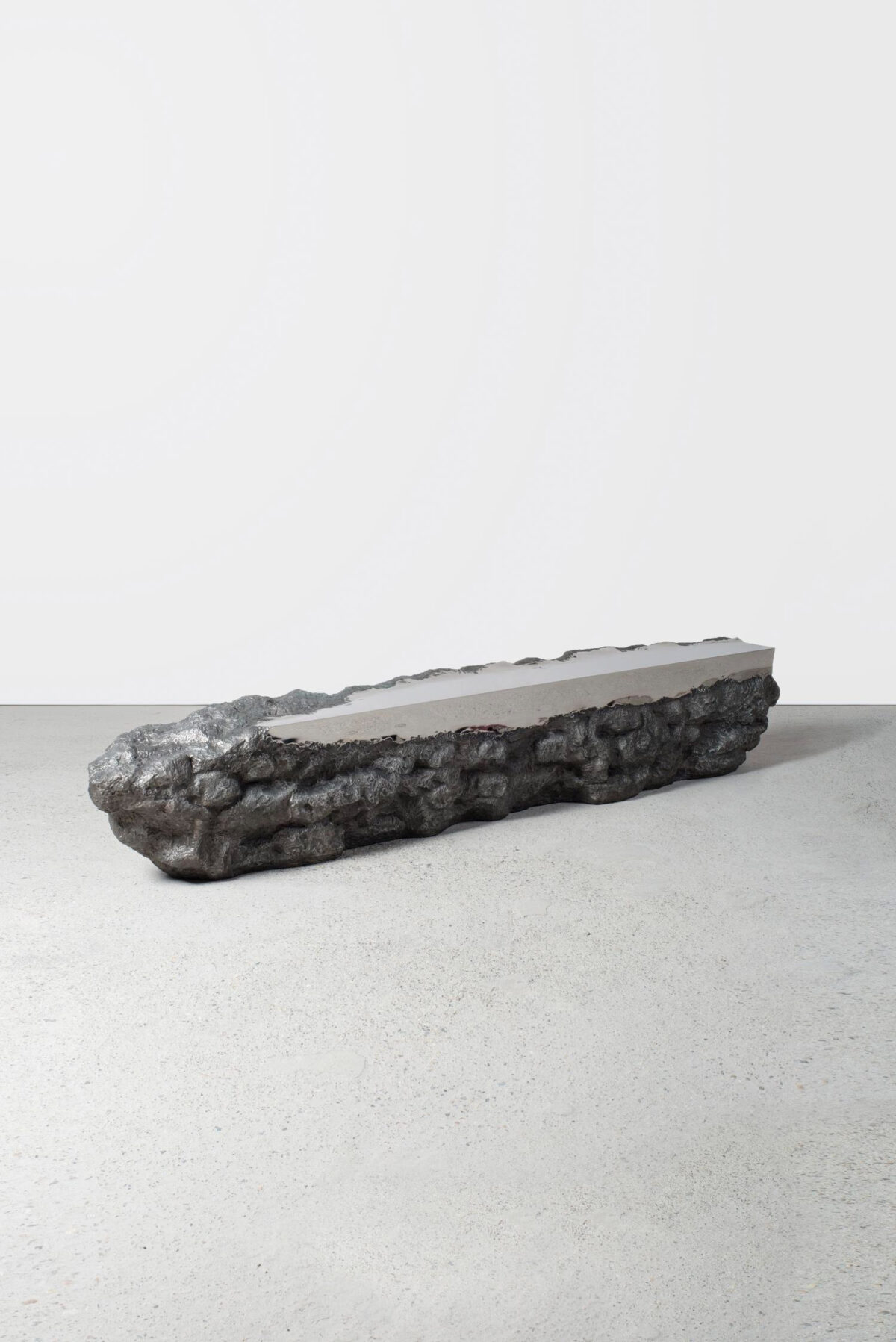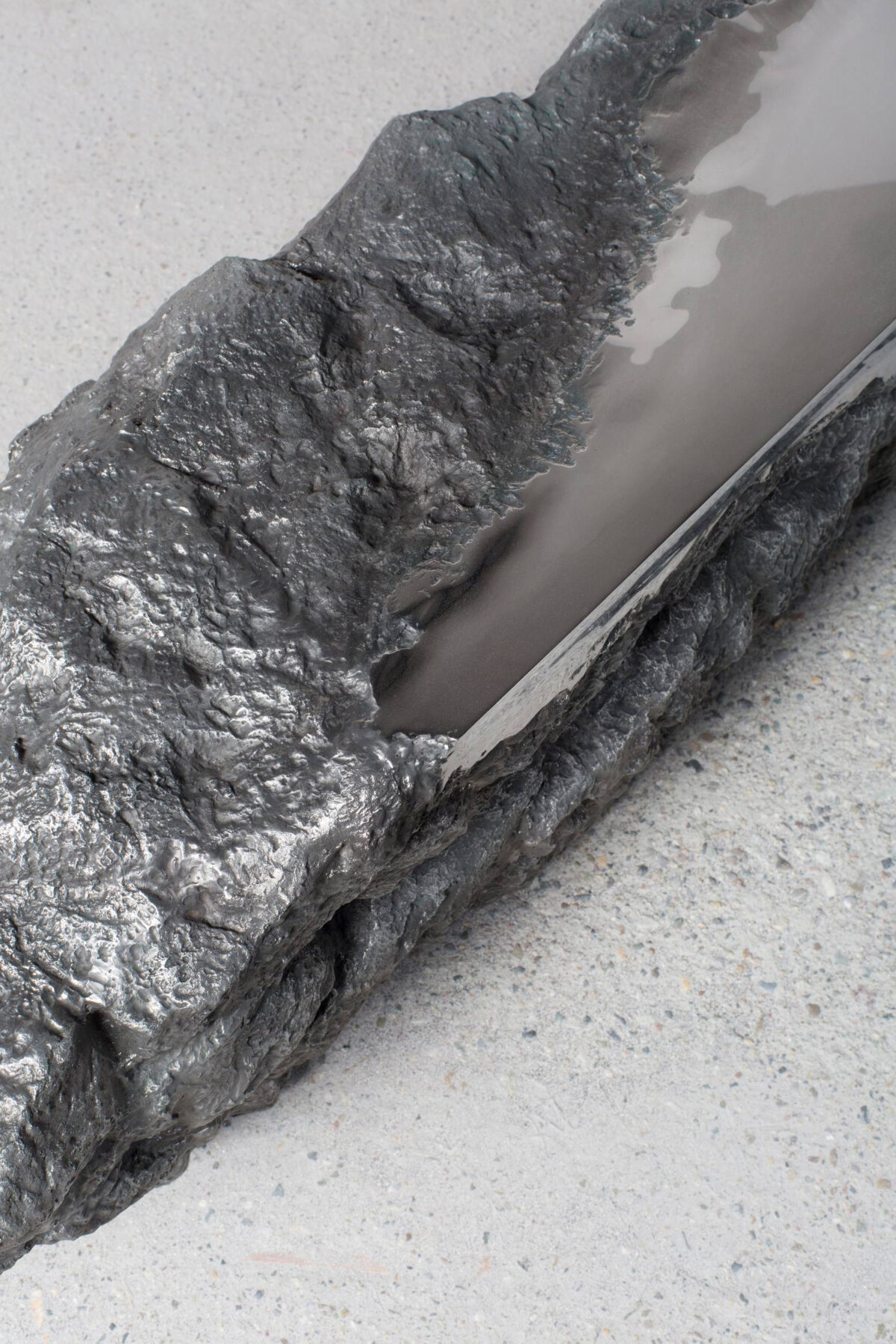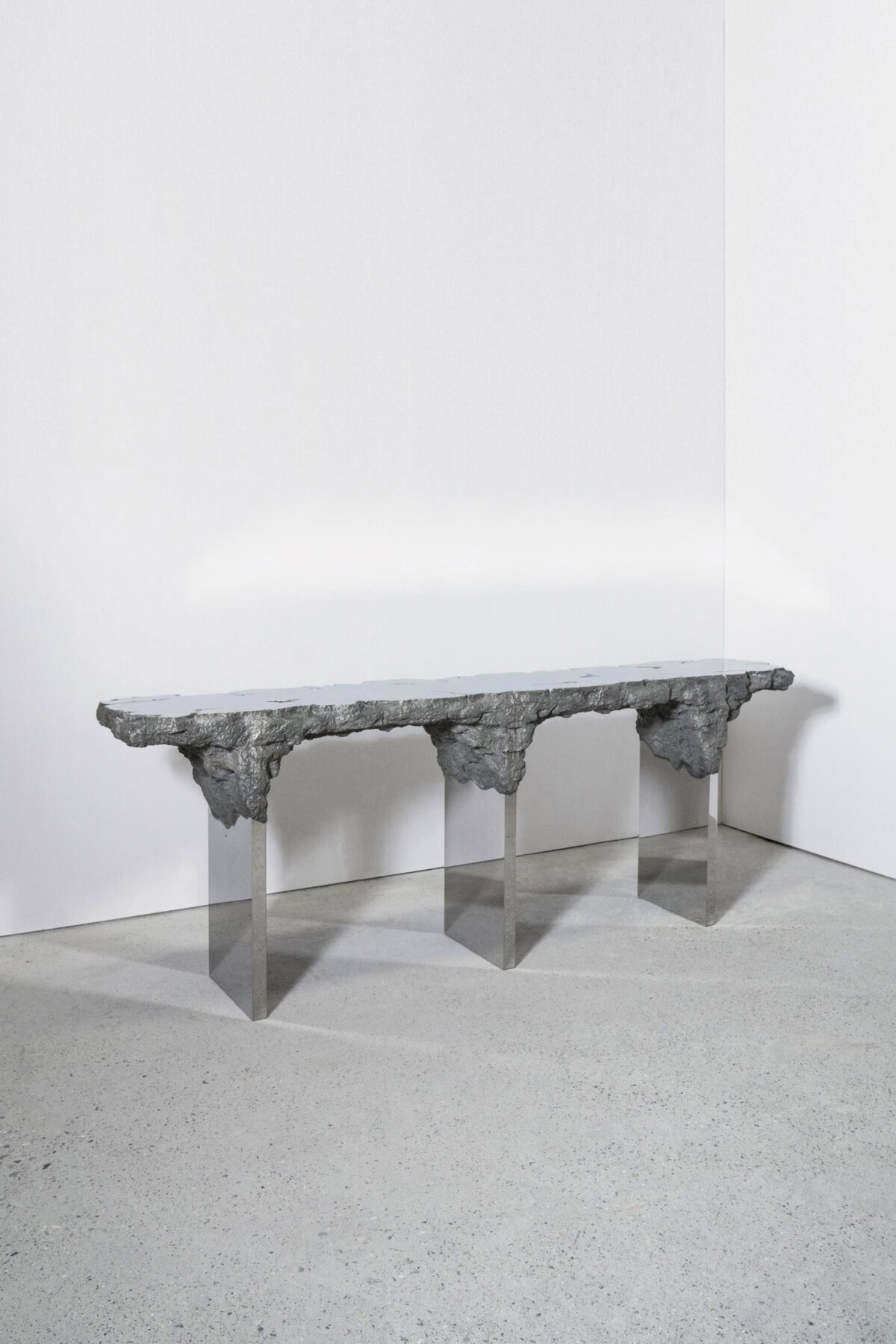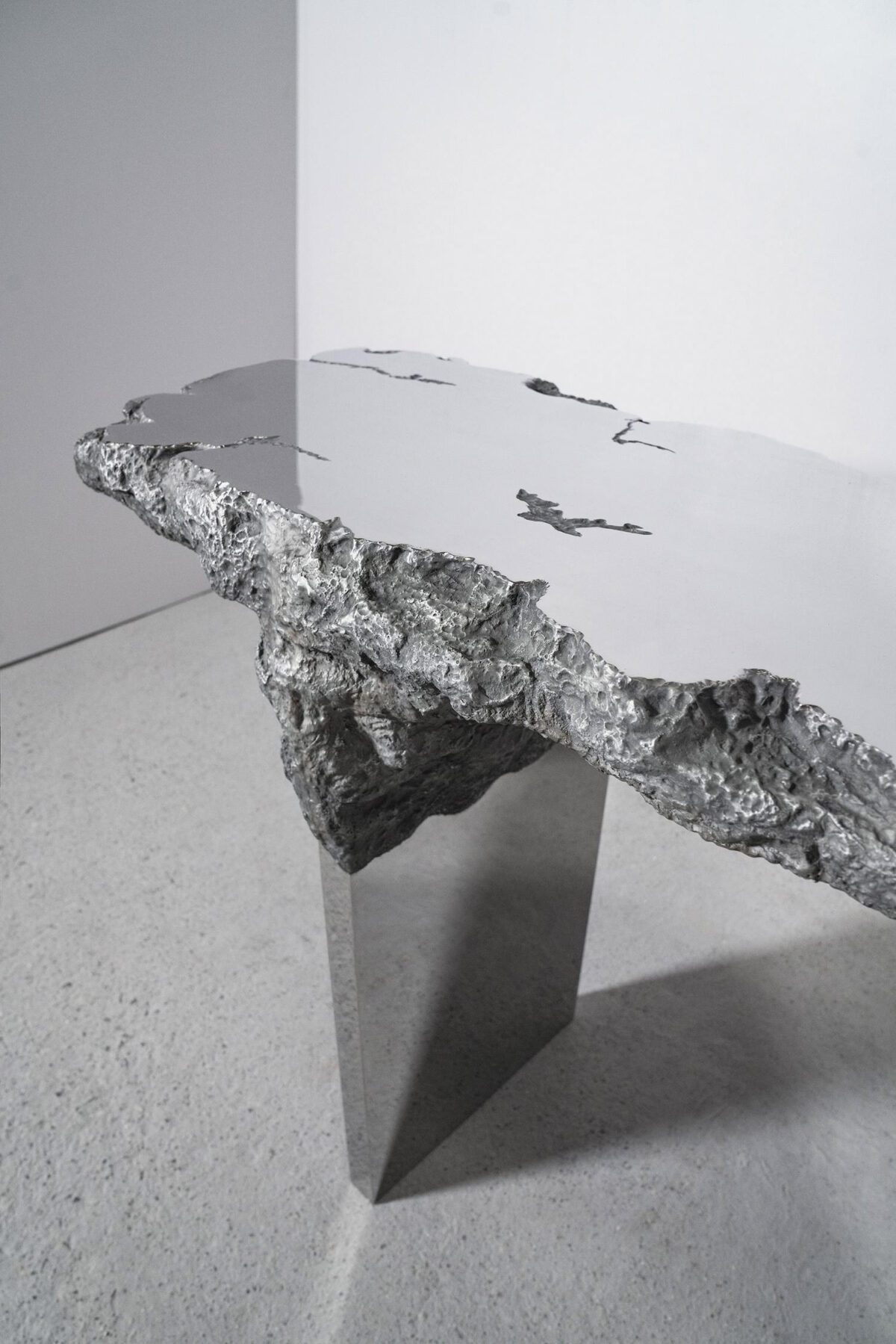Hongjie Yang, an innovative artist based in the Netherlands, blurs the line between nature and artifice with his striking sculptural furniture collections. His work, particularly the Synthesis Monolith series, exemplifies a profound exploration of the inherent transformation in materials like aluminum and steel. By drawing inspiration from their primitive origins within ores, Yang breathes life into these metals, weaving them into monoliths that merge ancient casting methods with cutting-edge contemporary technology. The resultant pieces feature a stunning convergence of untouched natural textures and meticulously polished surfaces, challenging conventional perceptions of form and function in furniture design. The interplay between rough and smooth surfaces captivates us, bridging the raw allure of nature with the refined grace of human innovation.
The reflective surfaces of these monoliths invite spectators to engage in a meditative dialogue with the artwork. As one approaches, their image is seamlessly integrated into the piece’s aesthetic, facilitating a unique interaction that is both personal and universal. Yang’s creations transcend mere furniture, acting as vessels of contemplation that encourage a deeper reflection on our interconnectedness with the world around us. The Synthesis Monolith series not only highlights the fluid boundaries between the natural and the manufactured but also elevates the observer’s consciousness, inviting them to ponder the ever-evolving relationship between humanity, technology, and the environment. Through each sculptural piece, Yang eloquently captures a moment of synthesis, where the ancient world and modernity coexist harmoniously.
Synthesis Monolith investigates the transformative properties of metal, tracing in a single totemic object the primitive origins of aluminium and steel in ores through to their emergence as highly polished artificial materials. The experimental casting method combines ancient techniques with contemporary technology, expressed in the convergence of natural and machined surfaces. The reflective exterior brings the viewer’s living presence into the sculpture’s aesthetic and form, seeking to evoke a state of contemplation.
Hongjie Yang
More info: Website, Instagram.
